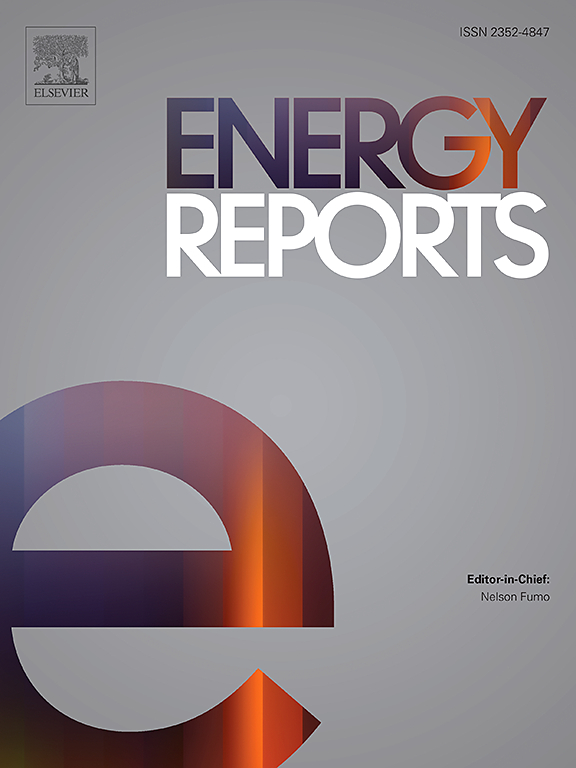海上PEM电解系统中海水淡化的多效蒸馏
IF 5.1
3区 工程技术
Q2 ENERGY & FUELS
引用次数: 0
摘要
我们研究了多效蒸馏(MED)脱盐系统与质子交换膜电解槽(PEMEL)的集成,用于大规模海上制氢。重点是利用PEMEL产生的废热来驱动MED过程。所建立的准稳态模型表明,除了电解槽输入功率低于额定负荷的5. %外,MED可以持续满足1 GW PEM电解槽的需水量。我们发现,在满负荷时,大部分多余的热量(高达94.12 MW)仍未收集,这突出了对进一步热管理解决方案的需求。对于最佳的MED设计,我们计算出增益输出比(GOR)为3.69,比热消耗(SHC)为631.54 kJ/kg,比传热面积(每千克/秒馏分的面积)为155.12 m²/kg/s。对于这种配置,MED估计在水平布局中占用约130 m²的占地面积,而1 GW PEMEL占地约12000 m²。本文章由计算机程序翻译,如有差异,请以英文原文为准。
Multi-effect distillation for water desalination in an offshore PEM electrolyser system
We study the integration of Multi-Effect Distillation (MED) desalination systems with Proton Exchange Membrane electrolysers (PEMEL) for large-scale offshore hydrogen production. The focus is on utilising the waste heat generated by PEMEL to drive the MED process. The developed quasi-steady-state model shows that MED can consistently meet the water demands of a 1 GW PEM electrolyser, except for electrolyser input power below 5 % of the nominal load. We find that at full load, a large part of the excess heat (up to 94.12 MW) remains uncollected, highlighting a need for further thermal management solutions. For the optimal MED design, we calculate a Gain Output Ratio (GOR) of 3.69, Specific Heat Consumption (SHC) of 631.54 kJ/kg, and a Specific Heat Transfer Area (area per kg/s distillate) of 155.12 m²/kg/s. For this configuration, MED is estimated to occupy a footprint of around 130 m² in a horizontal arrangement, while the 1 GW PEMEL occupies approximately 12000 m².
求助全文
通过发布文献求助,成功后即可免费获取论文全文。
去求助
来源期刊

Energy Reports
Energy-General Energy
CiteScore
8.20
自引率
13.50%
发文量
2608
审稿时长
38 days
期刊介绍:
Energy Reports is a new online multidisciplinary open access journal which focuses on publishing new research in the area of Energy with a rapid review and publication time. Energy Reports will be open to direct submissions and also to submissions from other Elsevier Energy journals, whose Editors have determined that Energy Reports would be a better fit.
 求助内容:
求助内容: 应助结果提醒方式:
应助结果提醒方式:


